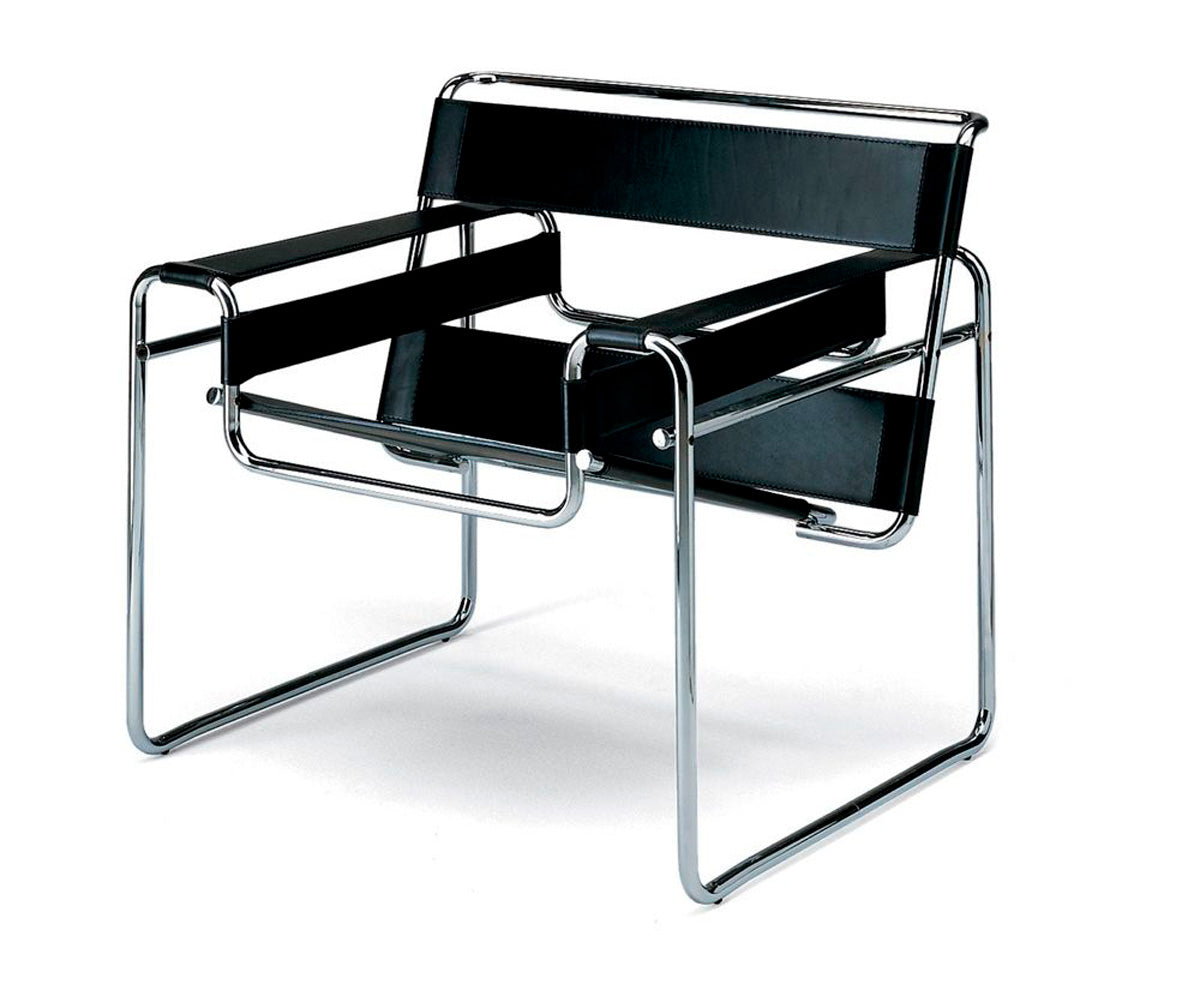An essential object in our lives, so well established inside our minds that we neglect it, but as in most artifacts used by us, behind it we can find the essence of some of history’s most important designers.
In 1859, Michael Thonet designs Chair No. 14, a classic among classics and one of history’s best selling models. In the beginning, it was created to be used in diners and today, this archetype or representations of it can be found in these and other many spaces.

Gerrit Rietveld gave the world the chair in 1917, the Red and Blue Chair, a model from the De Stijl movement. Even though it is not especially comfortable, it is one of the Dutch architect’s most famous pieces and it goes beyond comfort, it is a decorative object. An ode to the mathematical structure, with a simple shape and straight, black painted lines, its base and backrest are formed by two rectangles, a blue and a red one.
Inspired by the “Alder Bicycle”, Marcel Breuer created the first seat made of chrome steel pipes and which was easily produced, being its backrest, armrests, and seat made of leather. It appeared in 1925 under the name Breuer Club Chair (model B3) to later be renamed as “Wassily Chair”, after artist Wassily Kandinsky, who was delighted with the piece.
The Barcelona Chair is perhaps one of history’s most famous prototypes on the matter. Created by Ludwig Mies van der Rohe and Lilly Reich in 1928, it became part of the furniture for his most renowned work, the Barcelona Pavilion. The original design, previous to stainless steel, consisted of a pigskin cushion, ivory color, and X-shaped screwed-in legs.
The Zig Zag Chair is another proposal by Gerrit Rietveld. Conceived in 1934, it is made of natural cherry wood, it has no legs, and it is put together through flat surfaces with a diagonal support that unites them. Following the Stijl movement, this piece represents criticism to the economic recession of the time, thanks to its simplicity and the use of one single material.
Model 45 (1945) is one of the first designs in which Danish Finn Juhl frees the seat from the structure. Its style is characterized by organic pieces with soft and curvy lines, a drastic rupture with geometric shapes.
The Wishbone Chair (also known as CH24), by Hans Wegner, is a clear example of the Danish style. It was designed for Carl Hansen & Søn in 1949. More than 100 steps are required to make each Wishbone, and most are made by hand. It takes a craftsman around one hour to create the woven seat, using roughly 120 meters of paper cord. The result is a strong and durable piece. Also, Wegner chose to match the backrest and armrests in only one piece and the upper part was steam-bent, to guarantee a comfortable support.
Without going very far, the famous Acapulco Chair emerged here in Mexico in the 50’s, its origin is a mystery, but its popularity became international due to its innovation and freshness. A Mexican classic that can fit within the broad catalogue of timeless seats. 
Eero Saarinen presented the Tulip Chair for Knoll in 1955. It is composed by two independent pieces: the aluminum base and the fiberglass seat.
The Eames Lounge Chair and Ottoman was introduced to the world in 1956 and since that moment it went down in history as a classic. Its creators, Charles and Ray Eames, offered something unique for their time and, inspired by a baseball glove, presented the world a perfect match between design and comfort.
Arne Jacobsen made The Egg in 1958, for the Radisson SAS Hotel in Copenhagen, Denmark. Its egg shape is a characteristic signature of the designer’s style, who used almost literal metaphors for his pieces.
Another model by Eero Aarnio was the Ball Chair, born in 1963. Its balloon shape made it famous and its style defines most of the 60’s decade.


